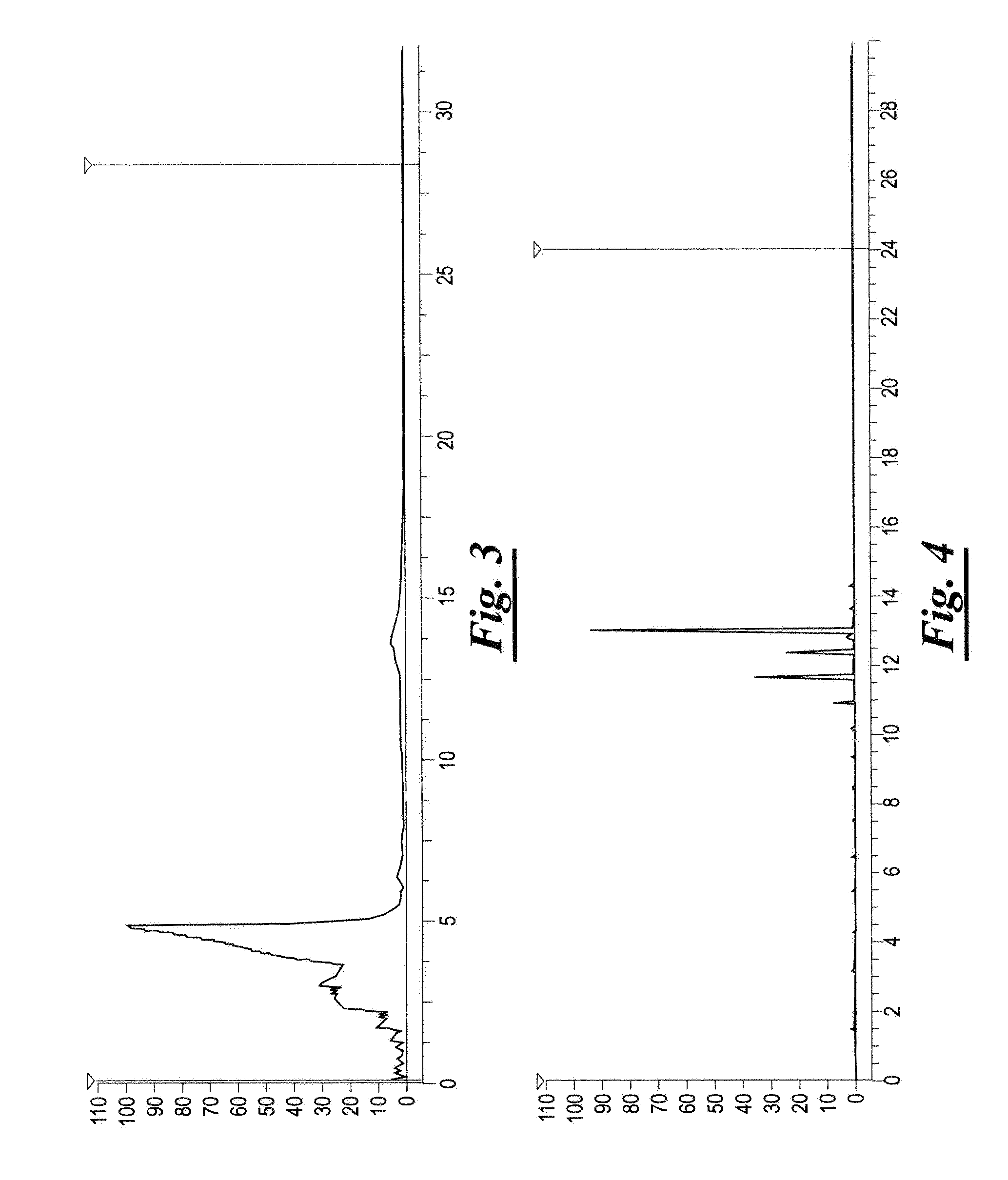Hydrodeoxygenation process
a technology of hydrodeoxygenation and process, which is applied in the preparation of oxygen-containing compounds, hydrocarbon oil treatment products, fuels, etc., can solve the problems and achieve the effect of adding to the cost of the hdo process
- Summary
- Abstract
- Description
- Claims
- Application Information
AI Technical Summary
Benefits of technology
Problems solved by technology
Method used
Image
Examples
example 1
Two-Stage HDO Process
[0030]A blend of brown grease, yellow grease, poultry oil, floatation grease, and lard was prepared. The fatty acid profile of the blend is summarized in Table I. Additional properties, including free fatty acid and contaminants concentration, are listed in Table II under the heading “Feed.”
TABLE IFatty Acid Distribution of Feedstock (wt %)C12:00.1C14:00.9C15:00.1C16:021C17:00.3C18:08.5C20:00.6C22:00.1C14:10.2C15:1C16:14.4C17:10.1C18:142.4C18:219.2C18:31.1C20:10.8C20:2+0.2
TABLE IIPerformance of First Stage HDO Reactor (Note a)First Stage HDO Reactor TempFeed500° F.600° F.650° F.Product AnalysisAcid number(mg KOH / g)72.337.95.341.65% Unsaponifiables1.267.3557.279.1% Free fatty acids38.0519.952.810.87% Triglycerides (Note b)58.4856.7316.50.851ICP Analysis (wppm)Iron14242.725.126.5Phosphorus19331.691.375.9Group I + II metals987358439508Byproduct yields (wt %)Water—1.235.586.6CO—0.230.450.72C02—0.00.150.70Notes:(a) All runs at 1600 psig pressure, 2 LHSV feed rate, an...
example 2
One-Stage Hdo Process
[0037]A 100 cc isothermal tubular reactor was filled with 80 cc of NiMo-on-alumina catalyst pellets (commercial catalyst from Catalyst Trading Company, Ltd., Houston) and +70-100 mesh glass beads. The catalyst had the same MoO3 / NiO loading and surface area as the NiMo catalyst of Example 1 and was sulfided according to the method described therein. The reactor was operated at 700 F and 1,200-1,600 psig H2 pressure with both vegetable oils and animal fat feeds. The feed flow rate was 1 LHSV (active catalyst basis), with about 10,000 scf / bbl H2-to-feed ratio. The n-paraffin products obtained were analyzed by GC and the HDO efficiency was calculated according to the method described in Example 1. The HDO efficiencies were 630% for tallow (beef fat), 58% for palm oil, and 66% for canola oil.
PUM
| Property | Measurement | Unit |
|---|---|---|
| Temperature | aaaaa | aaaaa |
| Temperature | aaaaa | aaaaa |
Abstract
Description
Claims
Application Information
 Login to View More
Login to View More - R&D
- Intellectual Property
- Life Sciences
- Materials
- Tech Scout
- Unparalleled Data Quality
- Higher Quality Content
- 60% Fewer Hallucinations
Browse by: Latest US Patents, China's latest patents, Technical Efficacy Thesaurus, Application Domain, Technology Topic, Popular Technical Reports.
© 2025 PatSnap. All rights reserved.Legal|Privacy policy|Modern Slavery Act Transparency Statement|Sitemap|About US| Contact US: help@patsnap.com



